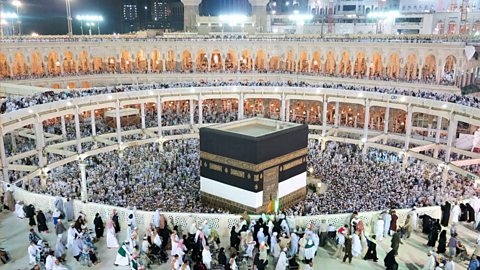Eggs as a symbol of Easter, new life and the resurrection.
Before the programme
- Look at the eggs together. Talk what connection children think it has with Easter and new life.
- Explain that an egg shape was used as a Christian symbol of Easter not only because new life hatches out of one (ie a chick!) but also because the shape of the egg is like a tomb.
- What do you enjoy most about Easter?
- Make a list as a class of as many different creatures that hatch out of eggs as you can - be as creative as possible and see how long the list can get. You could also ask groups of children to do this in competition with each other to see whose list is longest.
Programme content:
- Welcome and introduction. Ben is just finishing his breakfast: boiled egg and toast soldiers with a mug of hot chocolate. He reflects on Easter and its meaning for Christians.
- Vox pops. Children tell us what they enjoy about Easter time.
- Song. тАШEaster TimeтАЩ (Come and Praise: Beginning, no 55). Encourage the children to join in with as much as they can.
- Story. The magic egg. An original story story by Nicky Grischotti. JoeтАЩs school is fundraising for a new classroom and theyтАЩre holding an egg sale. He wants to make an enormous papier-mache egg using a leftover birthday balloon. Once itтАЩs finished he discovers that his egg is rather тАШeggstraordinaryтАЩ! Together they save the day and provide the school with a new classroomтАж
- Reflection. On Easter time, what children enjoy and the connection between eggs, new life and hope. Ensure everyone is listening carefully.
- Opportunity for prayer. Children can turn their thoughts into their own prayer of thanks.
After the programme:
Talk about the story
- Why was everybody making eggs?
- What fundraising events have you been involved with in school? What did you enjoy most?
- What do you think made JoeтАЩs egg grow?
- Make a list of all the different useful jobs that JoeтАЩs egg was used for. What else do you think they could have done with it?
- What disasters might have happened to JoeтАЩs egg during all its adventures?
- What would you do if you had a magic egg?
- What magic might your egg do?
Follow-up activities:
- Make a set of resurrection eggs as a class. These are eggs that contain symbols connected with different parts of the Easter story. You can find detailed instructions here on how to do this. It would work even better in terms of good RE if children were encouraged to think for themselves about what to put into each egg to represent the different aspects of the Easter story (they will obviously need to be familiar with the sequence of events first).
- Write magical stories about you finding an egg that could do magic and the adventure you had.
- Make chocolate eggs together by melting chocolate and pouring into moulds. Observe how it changes as it melts and solidifies again. Seal into bags for each child to take home for Easter.
- Have an Easter egg hunt - you could make maps for the children or give clue sheets as to where they need to look, or alternatively, each class could organise a hunt with clues / maps for another class to follow.
- Draw what you think JoeтАЩs egg-classroom looked like.
- Make papier-mache eggs like JoeтАЩs and decorate them with paint or collage bits.
Click to display the image full size

KS2. Pilgrimages part 1. audio
Gemma Hunt finds out about pilgrimages and why people make them

KS2. Pilgrimages: the Hajj. audio
Gemma Hunt looks at the theme of pilgrimages and why people make them.

KS2. Florence Nightingale. audio
Gemma looks back at the life of Florence Nightingale, the founder of modern nursing, who died 13 August, 1910.
